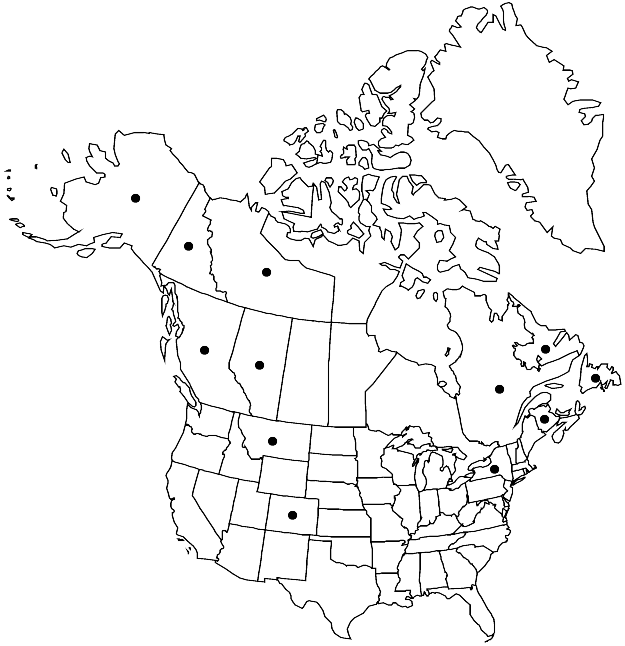Difference between revisions of "Campylophyllum halleri"
Nova Guinea 12: 123. 1914.
FNA>Volume Importer |
FNA>Volume Importer |
Revision as of 22:03, 16 December 2019
Plants green, yellowish, or brown. Stems with paraphyllia present, few, lanceolate-linear or sometimes ovate; axillary hair distal cells 1–6, rectangular or shortly so. Stem leaves hardly changing when dry, strongly squarrose in at least parts of shoot, otherwise ± squarrose, densely inserted, 0.3–0.7 mm wide; base erect-spreading; acumen 32–45% leaf length; basal alar cells rectangular or long-rectangular, distal alar cells quadrate, rectangular, or occasionally transversely rectangular, shorter than basal alar cells, alar region small, reaching from margin 20–35% distance to costa at insertion. Seta 0.8–1.3 cm.
Habitat: Mountainous areas of the West, lowland areas in the East, calcium-rich rock
Elevation: low to high elevations (0-1700 m)
Distribution

Alta., B.C., N.B., Nfld. and Labr., N.W.T., Que., Yukon, Alaska, Colo., Mont., N.Y., Mexico (Nuevo León), Central America (Guatemala), Eurasia.
Discussion
Campylophyllum halleri is easily recognized by its strongly squarrose leaves and short acumina. Similarly strongly squarrose leaves occur in other pleurocarpous species, for example in some of the much larger species of Rhytidiadelphus, but not in other North American species of Campylophyllum. No type material of Hypnum macounii Kindberg was found among Kindberg collections in Stockholm.
Selected References
None.